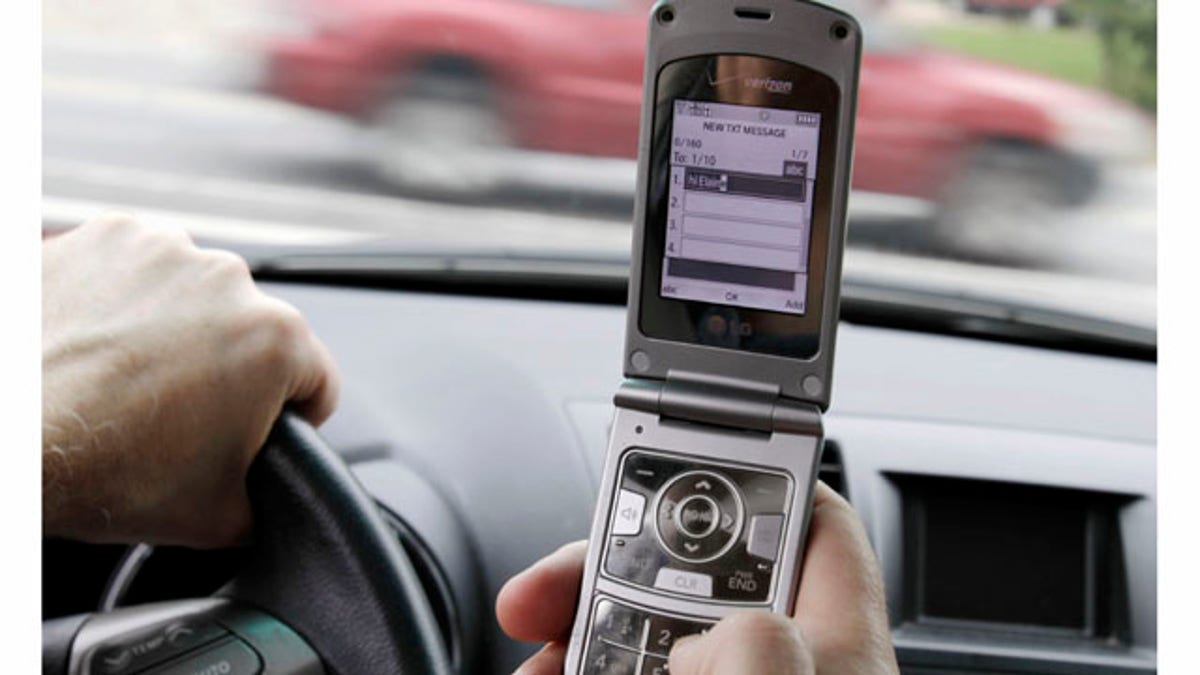
FILE - In this Sept. 20, 2011 file photo, a phone is held in a car in Brunswick, Maine. Texting while driving increased 50 percent last year and two out of 10 drivers say they've sent text messages or emails while behind the wheel despite a rush by states to ban the practice, the National Traffic Safety Administration said Thursday. (AP Photo/Pat Wellenbach, File) (AP Photo/Pat Wellenbach, File)
Bans on using cellphones while driving can decrease the rate of car accidents in cities, but not in rural areas, a new study suggests.
Researchers examined car-accident rates in rural and urban areas of New York, where cellphone use while driving was banned in 2001, and compared them with similar areas of Pennsylvania, which does not ban the practice.
In urban areas, the ban was associated with a relative decrease in accident rates over a seven-year period. By contrast, in very rural areas, the ban was associated with an increase in accident rates.
The findings suggest that such bans benefit densely populated areas, the researchers said.
So far, 10 states and Washington D.C. have banned all use of hand-held phones while driving, and 39 states have banned text messaging while driving.
Research has suggested cellphone use while driving impairs driver performance. One 2006 study used a simulated driving environment to find that cellphone users were just impaired as drunkdrivers. An analysis this year estimated that distracted driving kills 5,000 peopleeach year.
Many previous studies of cellphone bans have looked at accident rates over a few months, but not years, as did the current study.
It's possible that that lower enforcement of the ban in rural areas, or other factors unique to rural driving may have contributed to the increase in accident rates there, said study researcher Sheldon Jacobson, a professor of computer science and mathematics at the University of Illinois.
However, it's also possible that the lower, general accident rate in rural areas produced less rich data. More studies are needed to see whether the increase in accidents seen in this study truly resulted from the bans, Jacobson said.
The study is published in the December issue of the journal Transportation Research Part A: Policy and Practice.
